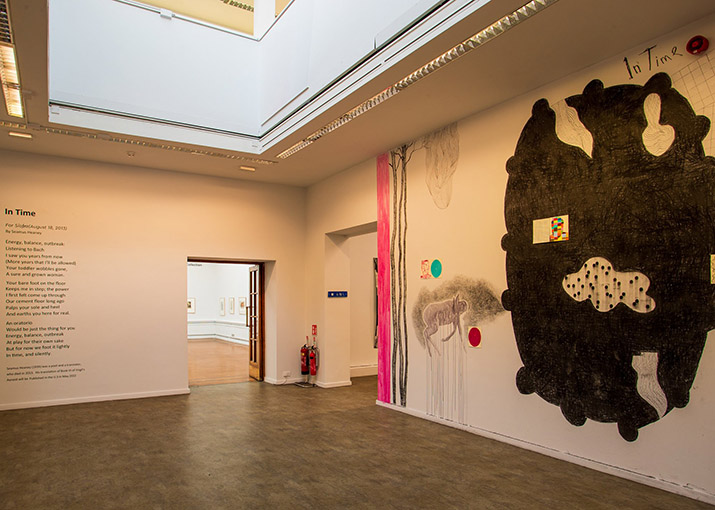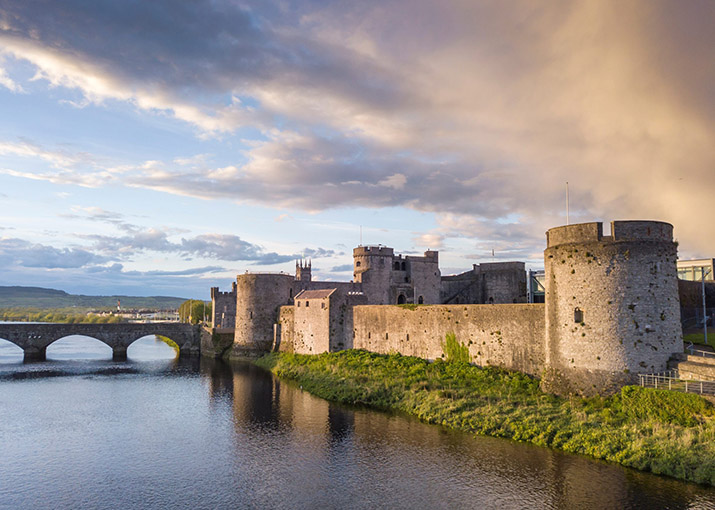Arriving in Limerick feels like stepping into a city where the past and present collide in the most fascinating way. Located on the west coast of Ireland, Limerick is often overshadowed by more prominent destinations like Dublin or Galway. But this city, with its cobblestone streets, charming architecture, and rich history, has a way of drawing you in once you take the time to explore its cultural heritage.
Walking through Limerick is like walking through layers of history. The city is dotted with historical landmarks, museums, and buildings that tell the story of its long and varied past. From the medieval roots of King John’s Castle to the more recent developments in the arts and culture scene, Limerick offers a unique glimpse into the evolution of Ireland.
In this post, I’ll share my experiences exploring some of the city’s most significant historical sites and museums. Whether you’re a history buff, a culture enthusiast, or simply someone looking to discover a new part of Ireland, Limerick is a destination worth exploring.
1. King John’s Castle: A Journey Through Time
My first stop in Limerick was King John’s Castle. Situated on the banks of the River Shannon, this 13th-century fortress stands as a testament to the medieval era. The castle was originally built by the Norman king John of England in the 1200s, and though it has undergone significant restoration, it still retains much of its original character.
As I walked through the castle’s imposing stone walls and took in the view from its ramparts, I could almost hear the echoes of battles fought long ago. The castle has a fascinating interactive visitor experience that brings its history to life. I could see how life inside the castle might have looked, from the living quarters to the battlements. There were even actors dressed in medieval garb, reenacting scenes of medieval life, adding a layer of immersion to the experience.
One of the highlights of King John’s Castle is the panoramic view of the River Shannon and the city of Limerick from the top of the towers. The castle overlooks the river, providing an excellent vantage point for understanding Limerick’s strategic importance in Ireland’s medieval history.
2. The Hunt Museum: A Treasure Trove of Art and Artifacts
Limerick is not just about castles and ancient history—it also boasts a wealth of artistic and cultural treasures. The Hunt Museum is one such place that brings together both historical and artistic elements. Situated in a beautiful Georgian building by the River Shannon, the museum houses a wide range of exhibits, including Irish art, European and Asian artifacts, and relics from ancient civilizations.
As soon as I walked through the doors, I was struck by the impressive collection of artifacts on display. One of the standout pieces for me was a collection of Irish silver dating back to the 17th and 18th centuries. The intricate craftsmanship of the silverware told a story of Ireland’s rich heritage in fine arts. The museum also houses works by some of Ireland’s most famous artists, such as Jack B. Yeats, and I was lucky enough to see several of his pieces up close.
Beyond the artwork, the Hunt Museum’s collections include relics from ancient Egypt, Roman and Greek sculptures, and a fascinating display of medieval manuscripts and artifacts. It was here that I truly began to appreciate the deep layers of history that Limerick holds within its borders. The museum does a wonderful job of blending the art with the history, offering a comprehensive view of the city’s cultural evolution.

3. The Treaty Stone: A Symbol of Peace
A short walk from King John’s Castle takes you to the Treaty Stone, one of Limerick’s most iconic landmarks. This simple stone monument sits by the River Shannon and marks the spot where the Treaty of Limerick was signed in 1691. The treaty ended the Williamite War in Ireland, and its terms allowed the Irish soldiers to leave the country in exchange for peace.
Standing there, it was hard not to feel a sense of awe. This stone has witnessed over 300 years of Irish history, and while it may seem unassuming at first glance, its significance is immense. The Treaty Stone stands as a symbol of a pivotal moment in Ireland’s tumultuous history, and it’s humbling to stand in front of it, imagining the events that unfolded right there by the river.
There’s a certain quietness to the Treaty Stone, with the sound of the river flowing nearby and the wind carrying whispers of history. It’s a peaceful place to reflect on Ireland’s journey, and I found myself taking a moment to think about the resilience of the Irish people and their long struggle for peace and independence.
4. St. Mary’s Cathedral: A Medieval Masterpiece
St. Mary’s Cathedral is another must-visit site in Limerick, and it’s a perfect example of the city’s medieval heritage. Built in the 12th century, the cathedral stands as one of the oldest buildings in Limerick. As I entered, I was immediately struck by the grandeur of the space. The cathedral’s Romanesque architecture, with its massive stone columns and intricate carvings, was awe-inspiring.
The cathedral has witnessed centuries of Irish history, from Viking invasions to the English Civil War, and it has survived the ravages of time. Inside, the cathedral has preserved several historical features, including beautiful stained glass windows and ancient tombs. I spent time admiring the intricacy of the carvings on the stone walls, which told stories of saints, kings, and battles fought long ago.
One of the highlights of visiting St. Mary’s Cathedral is the peacefulness that envelops you once inside. The cathedral’s calm and serene atmosphere makes it an ideal place for reflection, and I found myself lost in thought as I gazed at the centuries-old stonework.
5. The Limerick City Gallery of Art: Where History Meets Contemporary Creativity

While Limerick’s history is rich and fascinating, it also has a thriving contemporary arts scene, and the Limerick City Gallery of Art is a great place to experience this. Situated in a stunning 19th-century building, the gallery is home to a vast collection of modern Irish art, as well as works by international artists.
During my visit, I had the chance to explore exhibits featuring contemporary Irish artists, and I was blown away by the creativity and innovation on display. The gallery’s collection includes everything from sculptures and paintings to multimedia installations, offering a diverse and dynamic experience.
What stood out to me was the way the gallery seamlessly blends the old and the new. The building itself is a historical gem, but the art on display challenges traditional boundaries and reflects the vibrancy of Limerick’s cultural evolution. The Limerick City Gallery of Art is a must-visit for anyone looking to understand the creative pulse of the city and see how history continues to influence contemporary art.
6. The People’s Park: A Walk Through Limerick’s Green Heart
After a day spent immersed in history and culture, I decided to take a leisurely stroll through the People’s Park. This public park, located near the city center, is a peaceful oasis amidst the hustle and bustle of modern life. With its lush green lawns, beautiful flower beds, and tranquil pond, it offers a perfect spot to relax and reflect on the day’s adventures.
As I walked along the park’s winding paths, I admired the Victorian architecture that surrounds the park and the statues that commemorate important figures from Limerick’s past. The park’s history dates back to the 19th century, and it has long been a central gathering place for locals and visitors alike.
The People’s Park is not just a place to relax, though. It also hosts cultural events throughout the year, from music festivals to outdoor theater performances, making it an integral part of Limerick’s modern cultural scene. I felt like I was experiencing the city in its entirety: a blend of the old and new, the historic and the contemporary.


